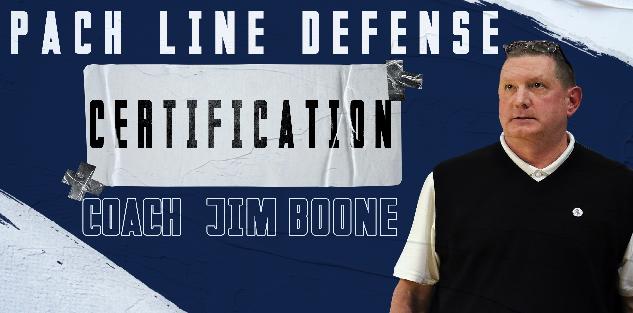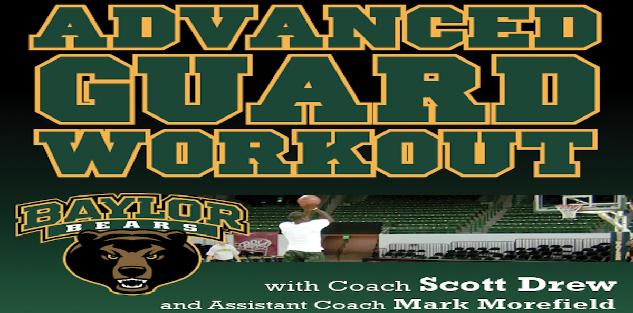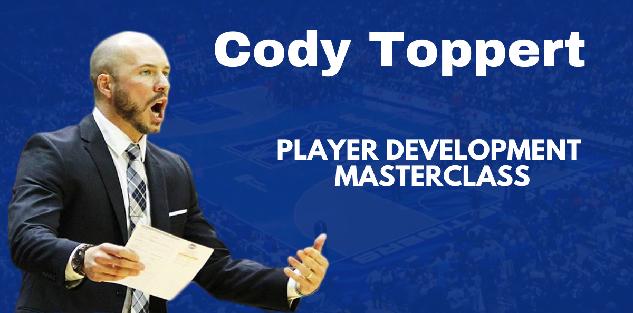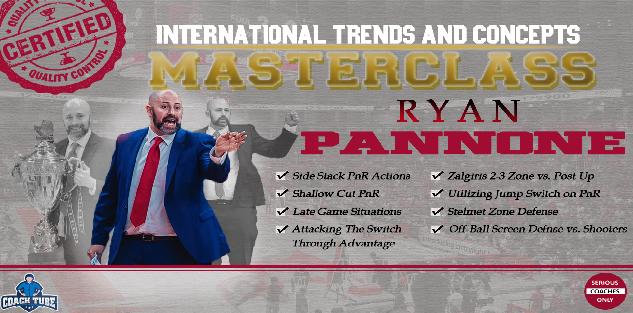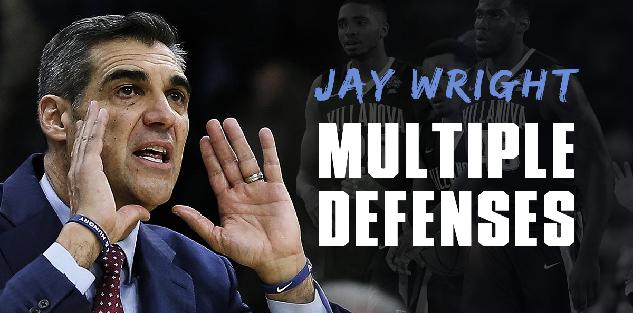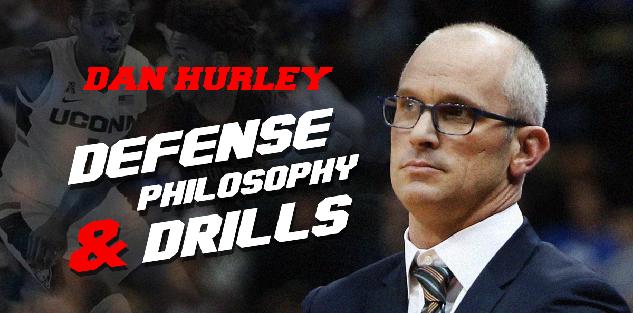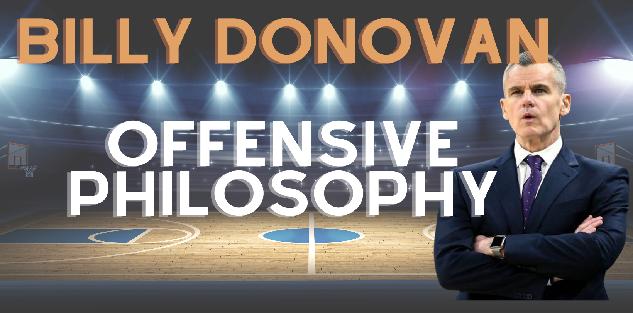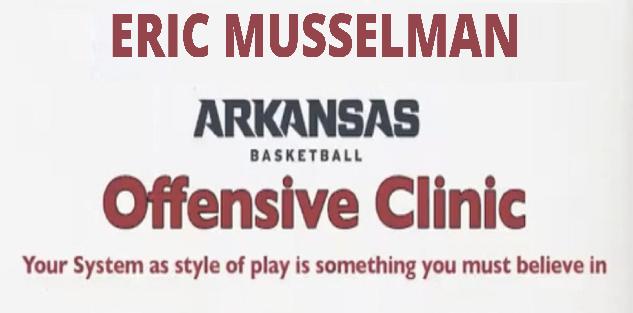Featured courses
- Two Great Game Situational Workouts For the Basketball Offseason by Grant Young
- Two Reads Basketball Players Must Understand Before Executing the Ball-Screen by Grant Young
- Two of LSU Coach Kim Mulkey’s Game-Winning Inbounds Plays by Grant Young
- Three Effective Early-Season Defensive Basketball Drills by Grant Young
- Four Essential Tips For Basketball’s 1-3-1 Zone Defense by Grant Young
- Four Zone Defense Drills to Strengthen Your Team by Grant Young
- How to Beat the Three Most Common Pick and Roll Coverages by Grant Young
- Two Drills to Improve Shooting at the Start of the Basketball Season by Grant Young
- Core Basketball Principles That Dallas Mavericks Coach Sean Sweeney Teaches by Grant Young
- Three Competitive Shooting Drills For Your Basketball Team by Grant Young
- How To Teach The ‘I’ Generation of Basketball Players by Grant Young
- Three Elite Drills to Begin a Basketball Practice With by Grant Young
- How to Build a Championship-Winning Basketball Team Culture by Grant Young
- Two of Texas Women’s Basketball Coach Vic Schaefer’s Tips For Team Culture by Grant Young
- Atlanta Dream WNBA Coach Brandi Poole’s Four Sets for Secondary Offense by Grant Young
- NC State Basketball Coach Brett Nelson’s 4 Crucial Point Guard Qualities by Grant Young
- Kentucky Coach Mark Pope’s Five Guard Rules For Offense by Grant Young
- McNeese State Basketball Coach Will Wade’s 4 Core Pillars by Grant Young
- 4 Tips To Instantly Improve Your Free Throw Shooting by Tyler Linderman
- Assemble a Championship-Caliber Basketball Rotation by Brandon Ogle
- Two of UConn Coach Dan Hurley’s Key Defensive Drills by Grant Young
- Four Post Moves All Basketball Forwards Should Have In Their Bag by Grant Young
- Four of Baylor Coach Nicki Collen’s Midseason Pick and Roll Adjustments by Grant Young
- WNBA Legend Sue Bird’s Two Tips For Attacking on Offense by Grant Young
- Houston Coach Kelvin Sampson’s Three Keys for Building a Basketball Program by Grant Young
- Two of Tom Izzo’s Top Michigan State Defensive Drills by Grant Young
- Four of Olympic Gold Medalist Coach Mechelle Freeman’s Relay Race Strategies by Grant Young
- Three Key Strategies Will Wade Uses to Build a Dominant Team by William Markey
- Five UConn Huskies Men’s Basketball Plays That You Can Use by Grant Young
- Three Tips for Maintaining Team Culture at the End of a Basketball Season by Grant Young
- Three Dribble Drive Motion Drills to Teach Your Basketball Team by Grant Young
- Three Dribbling Drills For Non-Primary Ball Handlers by Grant Young
- Four Advanced Ball Handling Drills For Basketball Guards by Grant Young
- Three Tips to Sharpen Your Post Player’s Footwork in Basketball by Grant Young
- These Three Pick and Roll Drills Are Crucial For Any Ball Screen Offense by Grant Young
- Three Closeout Drills to Improve Basketball Shooting Defense by Grant Young
- Three Tips to Perfect the Packline Defense in Basketball by Grant Young
- Four Keys to Executing the Read and React Offense in Basketball by Grant Young
- Three Tips to Develop Elite Basketball Shooters by Grant Young
- Three Crucial Keys to Executing the 5 Out Offense in Basketball by Grant Young
- These Three Offensive Sets Will Help You Beat Any Zone Defense by Grant Young
- Three Transition Basketball Drills To Play With More Pace by Grant Young
- Three 5 Out Offense Drills Any Basketball Coach Can Use by Grant Young
- Four Vital Techniques for a Motion Offense in Basketball by Grant Young
- Three Baseline Inbounds Plays To Win Your Basketball Team Games by Grant Young
- Four Drills For Sharpening the European Ball Screen Offense by Grant Young
- Three Positioning Tricks For a Basketball Zone Offense by Grant Young
- Three Rules to Perfecting Basketball's Lock Left Defensive System by Grant Young
- UCLA WBB Coach Cori Close’s Two Keys to Winning the Mental Game by Grant Young
- Four of Alabama Coach Nate Oats’ Favorite Basketball Drills by Grant Young
- Three Ways To Turn Transition Offense in Basketball Into Points by Grant Young
- Three Drills to Master Basketball's Pack Line Defense by Grant Young
- Three Transition Defense Drills to Halt Fast Breaks by Grant Young
- Four Offensive Rebounding Drills to Win Second Possessions by Grant Young
- 4 Defensive Technique Drills from Boston Celtics Assistant Coach Brandon Bailey by Marek Hulva
- 5 Drills to Improve Ball Handling by Tyler Linderman
- 13 FUNNY BASKETBALL GIFS by Alex
- BASKETBALL SPEED AND AGILITY: 8 QUESTIONS FOR COACHTUBE EXPERT RICH STONER by Jaycob Ammerman
- Defensive Strategies for Basketball by Ryan Brennan
- 4 Keys To Turning Your Program Into Championship Contender By Dallas Mavericks Coach Sean Sweeney by Marek Hulva
- 5 Components to Creating a Winning Basketball Program by Justin Tran
- Guide to Becoming a Lethal Scorer in Basketball by Justin Tran
- Zone Defense In the NBA Eastern Conference Finals by James Locke
- Mastering Court Mobility: Tips for Effective Movement in Basketball by Justin Tran
- 5 Basketball Shooting Drills: How to Develop a Sharpshooter by James Locke
- 6 Points of Emphasis for a Successful 5 Out Offense by Jaycob Ammerman
- Effective and Efficient Methods to Practice During the Basketball Season by Justin Tran
- Three Great Passing Drills From a Basketball Coaching Legend by Grant Young
- 7 Principles For Perfecting the Princeton Offense in Basketball by Grant Young
- How to Replicate A Modern NBA Offense by Grant Young
- Three Great Two-Ball Dribbling Drills For Basketball Development by Grant Young
- Two Rebounding Drills to Win Your Basketball Team Championships by Grant Young
- How to Improve Your Basketball Team’s Defense With the Shell Drill by Grant Young
- How Baylor Basketball’s Scott Drew Develops Elite Guard Play by Grant Young
- Off-Ball Movement Tips and Strategies: Lessons From the NBA Finals by James Locke
- Player Development: Scott Drew’s Tips for Producing NBA Guards by James Locke
- How to Execute a Spread Offense in Basketball by Grant Young
- Four Quality Quotes From Four Final Four Coaches by Grant Young
- A Guide to the Pack Line Defense by Alex Martinez
- 3 Defensive Build Up Drills to Improve Team Basketball Defense by Grant Young
- Battle of Two Great Coaches: Best Plays from the NBA Finals Contenders by Justin Tran
- 10 Creative Ways Athletic Programs Can Use a Video Board to Raise Money by Coach Williams
- How to Use 3 on 3 to Improve Your Basketball Team by Grant Young
- How to Defend the Pick and Roll by Grant Young
- Mastering Basketball Defense: Techniques, Drills, and Strategies for Success by Justin Tran
- Three Tips From The Coach Who Developed Giannis Antetokoumnpo by Grant Young
- 2023 NBA Draft: Skills and Technique from Top Prospects by Justin Tran
- From College to the Pros: Transitioning the Dribble Drive Offense by Justin Tran
- Positionless Basketball: Redefining Roles on the Court by Justin Tran
- Revolutionize Your Offense: Proven Concepts to Elevate Your Basketball Game by Justin Tran
- 5 Essential Fastbreak Drills Every Basketball Coach Should Know by James Locke
- How to Run a Circle Offense in Basketball by Grant Young
- Game-Changing Strategies: ATO Plays in the EuroLeague and Olympics by Justin Tran
- How to Stand Out at Basketball Tryouts by Grant Young
- How to Improve Your Basketball Team’s Transition Defense by Grant Young
- Indiana Fever GM Lin Dunn’s Two Keys For Women’s Basketball Coaches by Grant Young
- Strength Training Strategies Every Basketball Player Should Have by Grant Young
- A WNBA Basketball Coach’s Four Priorities In Transition Defense by Grant Young
- Three Adjustments to Make When Your Basketball Offense Isn’t Working by Grant Young
- Three Pillars to Applying Defensive Pressure on the Basketball Court by Grant Young
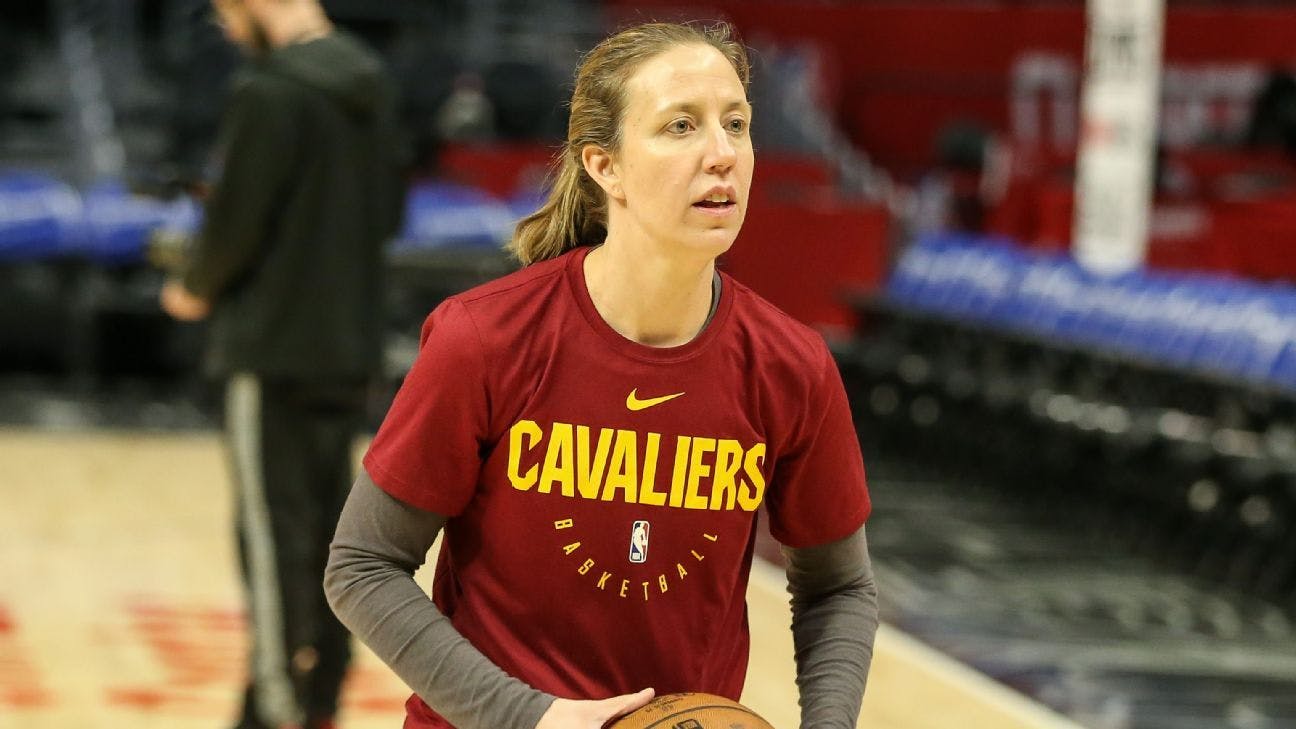
How to Defend the Pick and Roll
- By Grant Young
The pick & roll is one of the simplest (yet lethal) offensive tactics that a basketball coach can employ. And while it can sometimes seem impossible to stop when an offensive duo is executing it to near perfection, there are a few tried and true ways that coaches have adopted over the years, in order to put a halt to this two-man play and give their team a chance to win.
One of the coaches that has been pivotal in crafting a defense against the pick & roll is Lindsay Gottlieb. Coach Gottlieb is currently the head coach of the University of Southern California women’s basketball team. Prior to her arrival at USC, Coach Gottlieb was an assistant coach for the Cleveland Cavaliers NBA franchise, starting in 2019. This was historic, because it made Coach Gottlieb the first NCAA women's head coach to be hired by an NBA team.
Prior to being in Cleveland (who are in the midst of an intense NBA playoff series against the Boston Celtics), Coach Gottlieb was the head coach at the University of California, Berkeley, for eight seasons. She has collected a 268-154 overall record across 13 seasons as an NCAA head coach.
Coach Gottlieb has proven to be one of the best, when it comes to defending the pick & roll. And her ‘Defending The Pick the Roll from College to the Pros’ course from when she was with the Cleveland Cavaliers is a masterclass.
We've compiled some of Coach Gottlieb’s best insights on how to defend the pick & roll, giving you the tools you need to defeat this game-wrecking play.
General Principles
Coach Gottlieb explains that there are three general principles when it comes to defending the pick and roll. They are:
1. Do we know what we’re supposed to do?
2. Are we working/communicating with others?
3. How hard are we willing to play?
The first principle is simple: do your players know exactly what the coverage is supposed to look like? If they don’t, then you must ensure that they do know before you do anything else. Because any defensive scheme is bound to break down if your players aren’t crystal clear on what it entails.
“Pick and roll defense doesn’t work if just one guy doesn’t know what they’re supposed to do,” Coach Gottlieb says. Which is why effective communication between players (and from coaches to players) is absolutely crucial.
And the third general principle should be a core principle with everything, as it pertains to basketball. If your players aren’t willing to play at 100% during every possession, both on offense and defense, then there are bigger problems you must address before pick and roll defense.
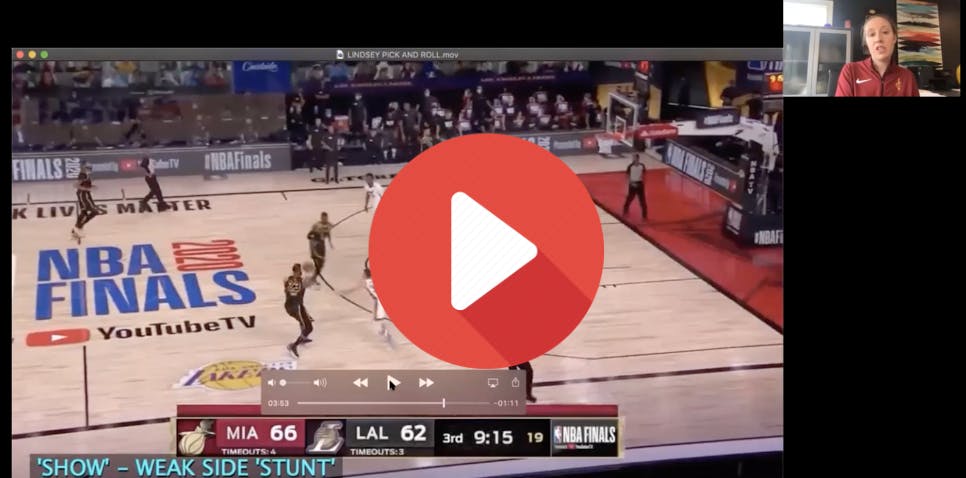
And then getting into more specific principles, Coach Gottlieb discusses that, no matter what your coverage is going to be (whether it’s going over/under the defender, whether you have a hedge, etc.), your on-ball defender has to be playing physical, putting pressure on the ball, and giving a great effort at all times.
As for the screener defender, they will need to have early and loud communication. This is especially when the on-ball defender, but it’s also important for every other defender on the court to be keened in to the communication and decision that are being made between the two pick and roll defenders, so they know when to assist if need be.
The screener defender needs to be in the right spot at all times, or else the entire defensive effort will be rendered useless. And they’ll also need to know their peel principles (which is when they’ll be taking the ball handler, and when you’re allowing the guard to get back in front).
Coach Gottlieb then notes how the Cavaliers tell their players that if they can cleanly see their players’ name and numbers on the back of their jersey, they aren’t getting back in front; which is when they want to yell, “peel!” to communicate the peel to the on-ball defender. The screener defender will also need to contest the shot, if need be.
As for the other defenders on the team, Coach Gottlieb shares a crucial insight. In a perfect word, the pick and roll should be defended by the aforementioned two players: the on-ball defender and the screening defender. Which means that the other three players on the court can remain on their respective players.
This is to say that the other defenders shouldn’t be overly eager to offer help on the pick and roll, at the expense of leaving the player they’re assigned to guard open. Instead, they need to trust that the on-ball defender and the screening defender will be able to execute your pick and roll defense. Although it’s also important for the other defenders to be available to help out, if doing so becomes a necessity.
Later on in her course, Coach Gottlieb mentioned that it’s inevitable that, if you are going to switch during your pick and roll, there will be some post-ups and mismatches that occur. Unfortunately, that is inevitable when defending the pick and roll, and is why it’s such an effective offensive technique.
Yet, the goal isn’t to stop every single pick and roll that you go up against. There will be some possessions where your opponents score, because that is simply the nature of basketball. But with Coach Gottlieb’s defensive principles and core techniques, the idea is that the pick and roll won’t be so unstoppable that it single handedly keeps your team from winning the game.
But if you can instill these principles within your players, they’ll be given the tools to not only effectively defend against the pick and roll, but will be adaptable enough for whatever offensive schemes and talents they might see on the court.

